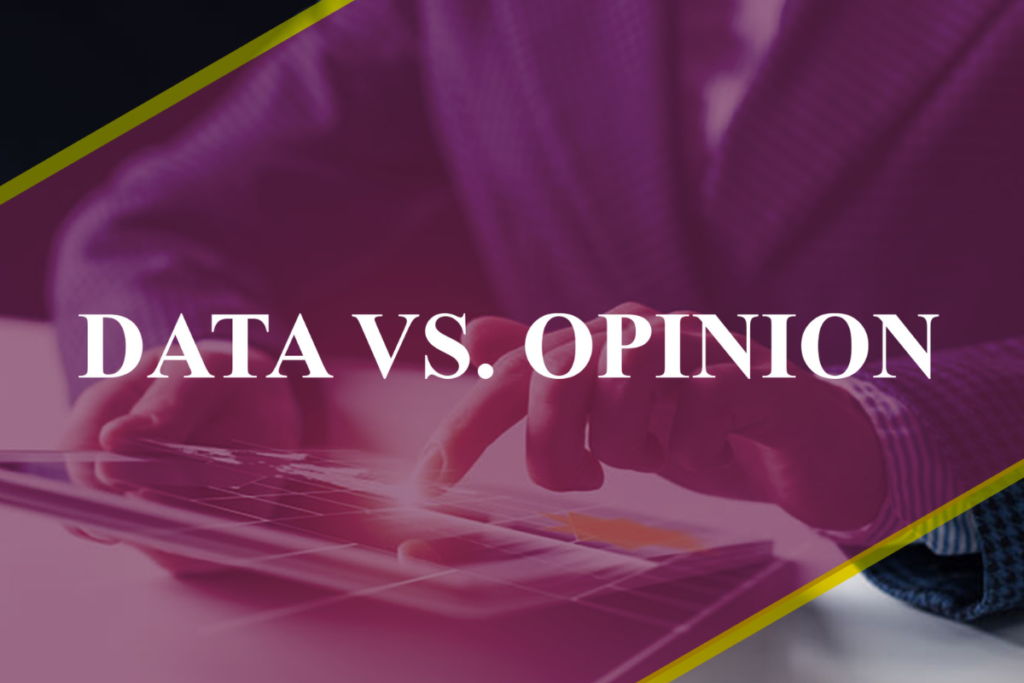
In today’s fast-paced world, decision-making has become increasingly complex. Organizations and individuals face a constant influx of information, making it crucial to discern between data-driven analysis and subjective opinions. Striking the right balance between these two approaches is essential for making well-informed decisions. In this blog post, we will delve into the significance of finding equilibrium between data-driven analysis and subjective opinions to navigate the complexities of decision-making successfully.
The Power of Data-Driven Analysis
Data-driven analysis harnesses the power of information to gain objective insights and make informed decisions. By examining patterns and trends within datasets, organizations can uncover valuable knowledge that drives growth and success. Data-driven analysis provides several key benefits:
Objective and Unbiased Insights: Data-driven analysis allows decision-makers to separate facts from personal biases, leading to more objective and unbiased insights. It eliminates the risks associated with subjective interpretations and ensures a foundation of accuracy in decision-making.
Identifying Patterns and Trends: By analyzing data, organizations can identify patterns and trends that may not be apparent on the surface. These insights enable organizations to anticipate market shifts, customer preferences, and emerging opportunities, giving them a competitive advantage.
Supporting Evidence-Based Decision-Making: Data-driven analysis provides the evidence necessary to support decision-making. It helps organizations justify their choices to stakeholders, minimizing uncertainty and increasing confidence in the decision-making process.
The Limitations of Data-Driven Analysis
While data-driven analysis offers numerous advantages, it is essential to acknowledge its limitations. Relying solely on data can be shortsighted, as it often lacks context and human interpretation. The limitations of data-driven analysis include:
Context and Human Interpretation: Data, on its own, fails to capture the nuances and complexities of real-world situations. Human interpretation and contextual understanding are vital for extracting meaningful insights from data. The human element complements data analysis by providing a deeper understanding of the underlying factors that may influence decisions.
Misleading or Incomplete Data: Data-driven analysis is only as reliable as the data it is based on. Inaccurate, incomplete, or biased data can lead to flawed conclusions and misguided decisions. It is crucial to ensure data quality and integrity when conducting analysis.
The Role of Opinion in Analysis
Opinions, while subjective, play a significant role in decision-making and analysis. Subject matter experts and individuals with experience bring valuable insights and expertise to the table. The role of opinion in analysis includes:
Subjective Insights and Expertise: Opinions provide a unique perspective based on personal experiences, domain knowledge, and intuition. Subject matter experts can offer insights that complement and enhance data-driven analysis, providing a well-rounded view of the situation.
Intuition and Gut Feelings: Sometimes, decisions cannot be solely guided by data. Intuition and gut feelings, developed through experience and expertise, can guide decision-making in situations where data is scarce or ambiguous. Ignoring these subjective signals can overlook valuable opportunities or risks.
Finding the Right Balance
To maximize the benefits of both data-driven analysis and subjective opinions, it is crucial to strike a balance between the two. Here are strategies for incorporating data and opinions effectively:
Seeking Diverse Perspectives: Actively seek input from diverse stakeholders, including subject matter experts, data analysts, and individuals with different backgrounds and viewpoints. This diversity fosters a broader understanding of the problem and helps uncover blind spots.
Thorough Research and Fact-Checking: Combine data-driven analysis with thorough research to validate findings and ensure accuracy. Fact-checking helps minimize errors and ensures decisions are based on reliable information.
Encouraging Healthy Debate and Dialogue: Create an environment that fosters healthy debate and encourages individuals to challenge assumptions. By welcoming differing opinions and engaging in constructive dialogue, organizations can uncover alternative perspectives and identify potential risks and opportunities.
The Importance of Transparency and Accountability
Transparency and accountability are critical components of the decision-making process. By establishing clear guidelines and processes, organizations can ensure decisions are made in a fair and transparent manner. Transparency fosters trust among stakeholders, and accountability ensures that decisions can be justified based on the available data and opinions.
Case Studies: Successful Balancing of Data and Opinion
Examining real-life examples where a balance between data-driven analysis and subjective opinions led to better outcomes provides practical insights. Let’s explore a couple of case studies:
Case Study 1: Company X’s Market Entry Strategy
Company X, a technology startup, was considering entering a new market. While data analysis suggested potential growth opportunities, subject matter experts highlighted the cultural nuances and regulatory challenges specific to the target market. By considering both the data-driven analysis and expert opinions, Company X developed a comprehensive market entry strategy that accounted for both objective and subjective factors, leading to a successful market entry.
Case Study 2: Public Health Policy Decision
In a public health crisis, decision-makers relied heavily on data-driven analysis to guide policy decisions. However, incorporating expert opinions from healthcare professionals, policymakers, and community leaders was crucial for understanding the local context, public sentiment, and potential implementation challenges. This balance between data and opinion ensured that policies were evidence-based while considering the unique needs of the community.
Overcoming Challenges in Balancing Data and Opinion
Balancing data and opinion in analysis comes with challenges. Some common obstacles include confirmation bias, limited data availability, and conflicting opinions. To overcome these challenges, organizations should:
Address Confirmation Bias: Actively seek diverse perspectives and challenge existing biases to avoid being influenced solely by preconceived notions or personal beliefs.
Mitigate Data Availability Issues: Acknowledge the limitations of available data and work towards obtaining more comprehensive and accurate data sources. In cases where data is limited, emphasize the value of expert opinions and contextual understanding.
Embrace Ongoing Learning: Encourage continuous learning and adaptability in analytical approaches. Stay updated on emerging methodologies, tools, and best practices to ensure analysis remains effective and relevant.
Takeaway
In the ever-evolving landscape of decision-making, finding the right balance between data-driven analysis and subjective opinions is critical for success. While data provides objective insights, opinions bring valuable expertise and intuition. By integrating these two approaches, organizations can make well-informed decisions that consider both facts and context. Transparency, accountability, and a willingness to challenge assumptions are essential for striking this balance effectively. Embracing a holistic approach to analysis will empower organizations and individuals to navigate complexities and make more accurate and informed decisions in an ever-changing world.



